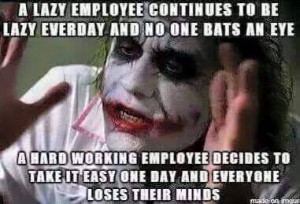10 reasons why you shouldn’t work at a retail clothing store
Working in retail stores is not always glorious, however, as a college student it might just be one of the easiest jobs and the most available. (Courtney King/Emerald)
Plastic: That’s how I would sum up my experience working in a retail clothing store environment. That’s how I would sum up my months spent slaving away at Gap Kids and J.C. Penney for 10 cents over minimum wage.
It didn’t always seem like such a bad idea. At the tender age of 16, all I wanted was a summer job – it would be a ticket out of the house and a great way to earn some pocket money, I reasoned. Plus, I love clothes. What could wrong? … So much.
Let me put it this way: Retail work is like the sketchy prescription drug that gets pulled from the shelves months later because of its unforeseen side effects – In this scenario, you’re the FDA and your job at Dick’s Sporting Goods is the medicine you were duped into approving, only to realize a short time later that you’ve made a terrible, terrible mistake.
If you haven’t had the unique displeasure of employment at a retail-clothing store, and are considering selling your soul to the polyester devil this summer, allow me to impart some wisdom that could ultimately spare you from the hell that is retail. Here are 10 reasons why you should toss away your application to work at a clothing store.
1. It makes you hate humanity.
Thanks to the dreaded “customer always comes first” policy that is practically inserted as a chip into the minds of consumers, as a retail employee, you’ll get to meet a variety of individuals that have very little regard for common courtesy and human emotion. You’ll be expected to handle everything from arrogant soccer moms to racist senior citizens with nothing short of a smile on your face. Try that for a few months, with no tips, and you’ll understand why some prefer cats to people.
2. You have to stand on your feet for hours at a time, but can’t wear comfortable shoes.
When I worked at J.C. Penney, I wore through the linings and soles of a different pair of shoes every month. Since comfier and more supportive shoes were too informal for the dress code, my feet were condemned to flats. Dr. Scholls was no match for my persistent, weekly blood blisters.
Aside from the injuries I sustained, my legs were in almost constant agony. Eight-hour shifts were the bane of my existence, and we weren’t allowed to (heaven forbid) tarnish the aura of professionalism in the store by sitting down for a few minutes. And — just like aSaw movie — security camera footage would record our every movement in case we should ever take our relationship with the chair outside the fitting room to the next level.
3. Fitting Rooms.
Cleaning out a fitting room is like living the game of Tetris, except you aren’t afforded the sweet release of “game over.” Imagine your room at its messiest. Then throw in a few screaming babies, and perhaps a little boy jumping back and forth at the fitting room entrance, hoping to trigger the motion sensor and produce a chorus of doorbell noises that he finds endlessly satisfying. The only solace I ever found in fitting rooms was the fact that they were security-camera free. During slow shifts, I used to lock myself in one of the stalls and sit down for a few minutes.
4. “Go-backs”
I overheard this phrase in a Forever 21 the other day and it still made me shudder. If you work in retail, you’ll spend 95 percent of your shifts in an endless loop trying to return all of the clothes left behind from returns and fitting rooms to their original location.
5. You have to stalk people.
If you’re sick and tired of the following charade, so is the sales associate.
“Hello!” he or she proclaims.
“Damn it,” you think. “I’m trying to look engrossed in this clearance rack for a reason.”
“Thank you for coming to [insert name of clothing store here]! Just to let you know, all of our jeans are ‘buy one get one half off’ today!” she says with a plastic smile. “Are you shopping for anything in particular today?”
“No. Just browsing.”
6. Sales quotas
Just to get this out there: I absolutely hate selling things. So it’s no surprise that I consider this a drawback to the profession. But it’s one thing to ask your employees to show off merchandise, and quite another to guilt and shame them into selling. At the beginning of every shift at Gap, we’d get briefed on sales for that day and then told how much was needed to meet the goal. The consequence of not meeting target? Corporate would make cuts to the payroll. As a result, our managers would make us redirect the focus of customers off of the clearance rack and to the more expensive parts of the store.
7. Pushing the company rewards card.
Most retail clothing stores will also make you sell the living shit out of rewards cards that may or may not benefit the customer in the long-run at all. You’ll have to advertise its existence with every transaction, and pretend that signing up is not just a credit disaster waiting to happen.
8. Afterhours cleanup, or recovery.
If you’re working a closing shift, expect to stay at least one or two hours after you’re scheduled to end. While this can be a great bonding experience with your coworkers (suffering fosters a sense of belonging), it sometimes takes enormous amounts of work to ready a store for opening the next morning.
9. Coupon arguments
I love a good bargain. Who doesn’t? But when you make me split the purchase into seven different transactions just so you can combine coupons, you’re pushing your luck. And no, ma’am, your vision is perfectly fine and this offer expired three years ago.
10. Black Friday, Christmas and Back-to-School sales
Take everything from this list and multiply it by a hundred.
Sourced from dailyemerald.com























Recent Comments